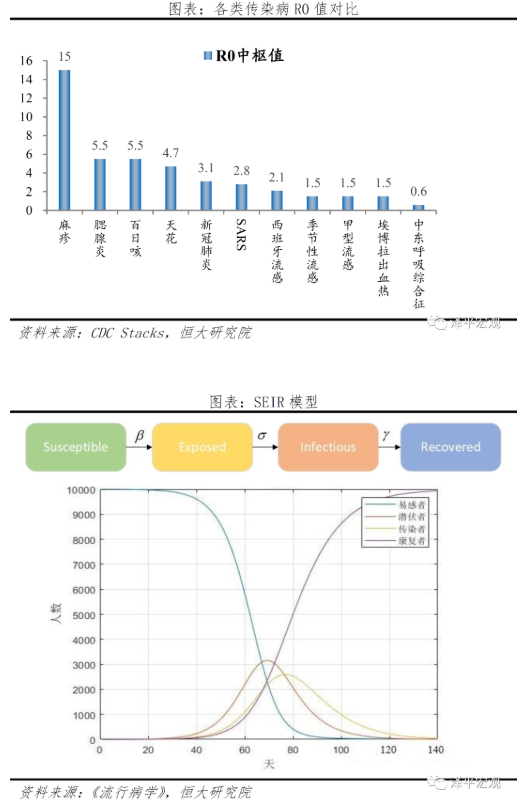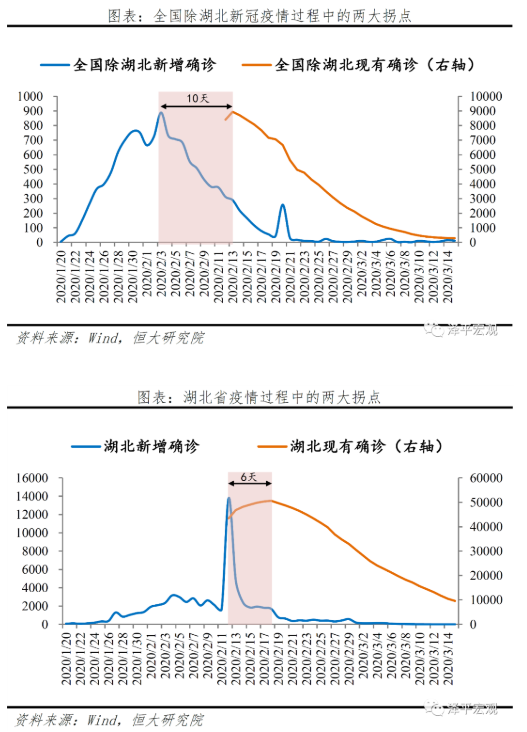As of April 8, 2020, COVID-19 has been diagnosed 1.43 million and died 82000, affecting more than 200 countries. 35 countries have entered a state of emergency. The epidemic has evolved into a global pandemic, and the depth of economic recession has exceeded that of the international financial crisis in 2008. With the exception of a few regions such as China and South Korea, the current situation in most parts of the world is grim. Major economies in Europe, the United States and Asia have been hit hard, especially in the United States, where the number of confirmed cases has exceeded 300000. India, Brazil and other developing economies have poor health care, dense population and worrying chaos.
How long will the epidemic last? When will Europe and the United States control it? Will China break out again?
The basic conclusions of our analysis based on data and models are as follows:
1) COVID-19 is highly contagious, with a R0 value of about 3.1, which is higher than that of SARS and Spanish influenza. 30% Mel 60% of novel coronavirus infected people are asymptomatic or mild, but contagious, which is the prominent reason why it is difficult to prevent and control.

2) the new confirmed inflection point and the emergence of the existing confirmed inflection point are the premise of the mitigation of the epidemic situation, and the two inflection points are the key to observe the epidemic situation. The new confirmed inflection point means that the epidemic spread rate decreases, that is, the increment begins to alleviate, and the existing confirmed inflection point means that the cure + death rate exceeds the epidemic spread rate, that is, the stock begins to alleviate. Only after the second inflection point is reached can the overall epidemic situation be alleviated.
China: the two inflection points are 6-10 days apart, and the second inflection point is fully relieved about 25 days later.

South Korea: the two inflection points are 11 days apart, but the decline in the number of new confirmed cases after the second inflection point is limited, there is a "long tail", and there are no signs of the complete end of the epidemic.

3) Italy, Spain and Germany reached the high point of new diagnosis in late March, that is, the first inflection point, which is now approaching the second inflection point, and is expected to be gradually alleviated by the end of April, but there are "long tail characteristics".



The number of new confirmed cases in the United States and France has shown signs of the first inflection point in the data, while the second inflection point is not likely to occur until at least mid-April, with a significant reduction likely after mid-May.
The United Kingdom, India and Brazil as a whole are in the early stages of the epidemic, and the epidemic will last at least 2-3 months in the future.
Due to the larger population size, poor health infrastructure and lack of inspection and quarantine materials in India and Brazil, India and Brazil will become the largest area of uncertainty and risk in the world for some time to come.
4) at the beginning of the epidemic, European and American countries were careless at the beginning, the general response lagged behind, and epidemic prevention measures were also faced with social, cultural and institutional restrictions. At present, epidemic prevention measures in Europe and the United States are close to the highest level, and the epidemic prevention situation is expected to improve gradually.
The epidemic in Japan has broken out for the second time, more severe than the first.

Due to the import risk and the existence of internal asymptomatic infection, China needs to guard against the risk of secondary outbreak in the future.
The situation in developing countries such as India and South America is worrying because of inadequate health infrastructure, lack of medical resources and dense population.
5) in terms of drugs, a number of drugs with high hopes have been proved to be ineffective. At present, the most promising drugs, such as Redcivir, hydroxychloroquine / chloroquine and fapiravir, are still in clinical trials and will be blinded by the end of April at the earliest.

In terms of vaccines, there are currently more than 60 vaccine research and development projects, but it will take at least 1-1.5 years to verify the effectiveness and safety of vaccines.
6) it is expected that the epidemic in Europe and the United States will begin to alleviate in the next 1-2 months, but it will face a "long tail effect". The complete end depends on vaccine research and vaccination.
There are three scenarios in the future:
In an optimistic scenario, if the infection rate is 0.3% and the case fatality rate is 2.5-4%, the number of people infected in Europe and the United States will be less than 3.2 million, and the epidemic will basically end this summer. It had a great impact on the economy in the first half of the year, but the economy rebounded rapidly in the second half of the year, and the impact was basically controllable.
In a neutral situation, if the infection rate is 0.6% and the case fatality rate is 3-5%, more than 3.2 million people in Europe and the United States will be infected. At present, the global population excluding China is 6.2 billion, which is 5.8times the population size of Europe and the United States. Therefore, in a neutral scenario, the actual number of infections in the world is estimated to be about 30 million and lasts for 3-5 quarters, with "long tail characteristics". The economy was deeply depressed in the short and medium term, and then gradually recovered.
In a pessimistic scenario, the infection rate is more than 1% and lasts for a long time, leading to a sharp recession in the global economy, widespread closures and unemployment.

For China, we face three major battles:
Fighting the epidemic, resuming production and expanding domestic demand, with the epidemic gradually under control and the rapid development of resuming work and production, the main contradiction facing China's economy at present is insufficient aggregate demand, and resuming work does not mean resuming production. Consumer, production and export enterprises are facing a sharp reduction in orders.
The new infrastructure takes into account both short-term effective demand expansion and long-term supply-side reform, which is the most effective means and the most effective starting point. 327 the meeting of the political Bureau of the CPC Central Committee clearly expanded domestic demand and launched a "new" round of infrastructure construction, dominated by fiscal policy and supplemented by monetary policy, to hedge against the economic downturn and prevent large-scale closure and unemployment.
In the face of major challenges such as the global pandemic, the international financial crisis, the deep economic recession in Europe and the United States, Sino-US trade frictions, transformation and upgrading, we take a clear-cut stand in advocating "new infrastructure". The report that "it is time to launch a new round of infrastructure construction" was released on February 28th. The official Wechat account has received hundreds of thousands of readers and hundreds of millions of related retweets across the network, causing widespread market attention and discussion in the industry. People from all walks of life are extremely vocal about the new infrastructure, but there are also many opposing voices and misunderstandings. On the whole, these discussions are objective and rational and promote the deepening of understanding, the formation of public policies and social progress. We have successively released a series of articles, such as "getting ready to deal with the Global Economic and Financial crisis, launching New Infrastructure" and "Research report on China's New Infrastructure", to promote the formation of social consensus.
Let the "new infrastructure" really play an important role in stabilizing growth, making up for weaknesses, adjusting the structure, promoting innovation, and benefiting the people's livelihood, and play a strong driving effect, magnifying effect and multiplier effect. Compared with quantitative easing and helicopter spending in Europe and the United States, the new infrastructure can really leave something for future generations.
Edit / Edward
